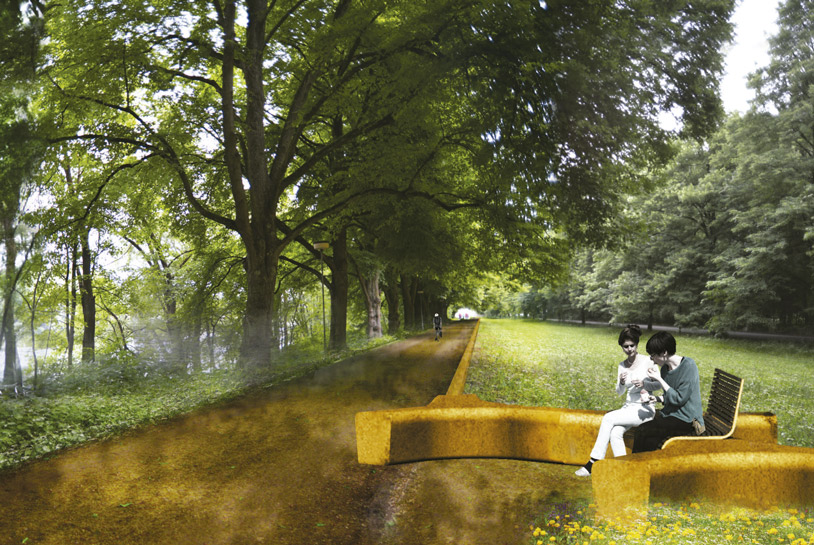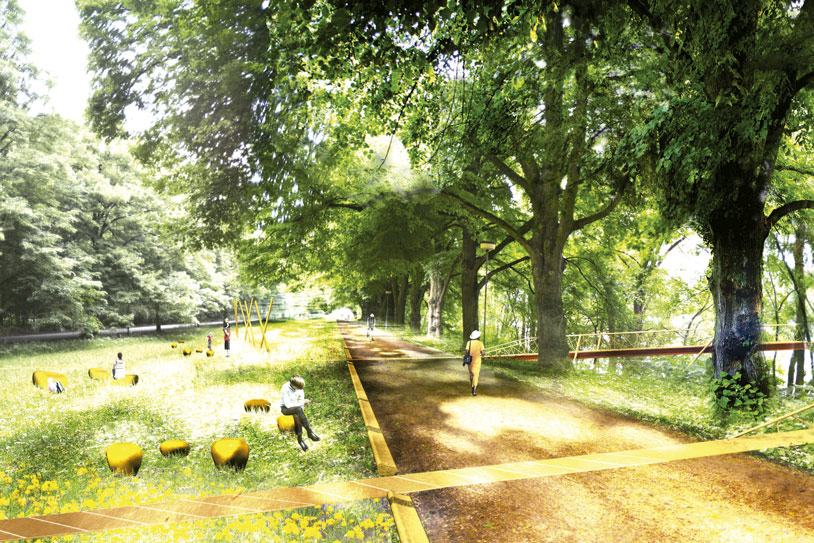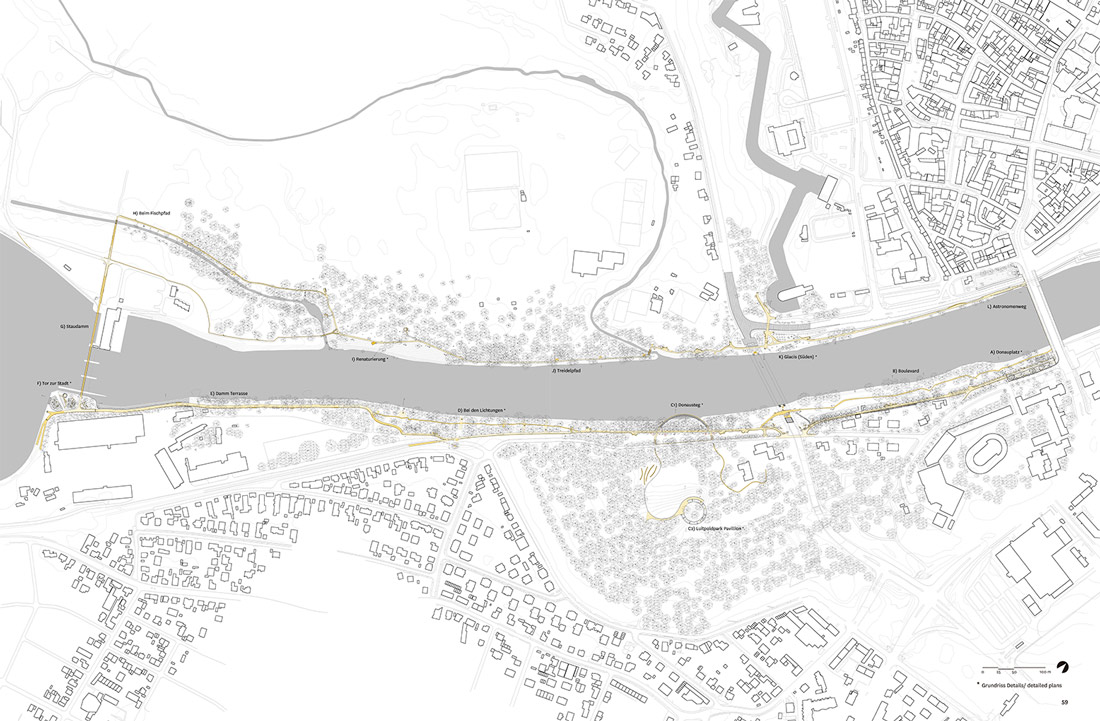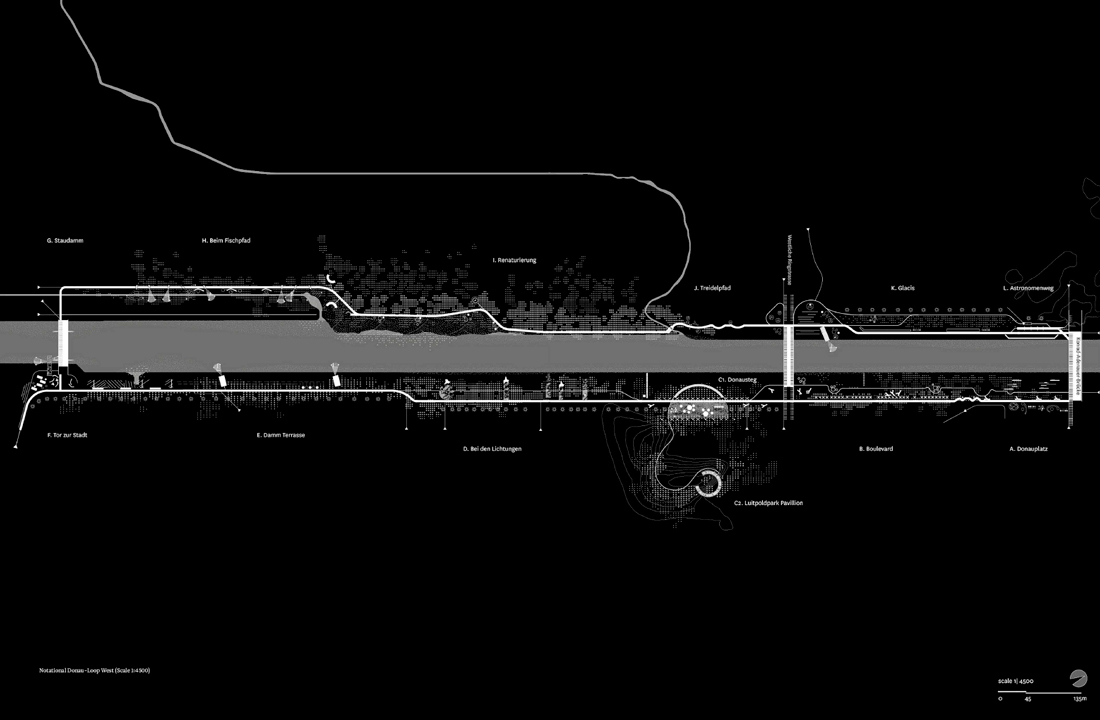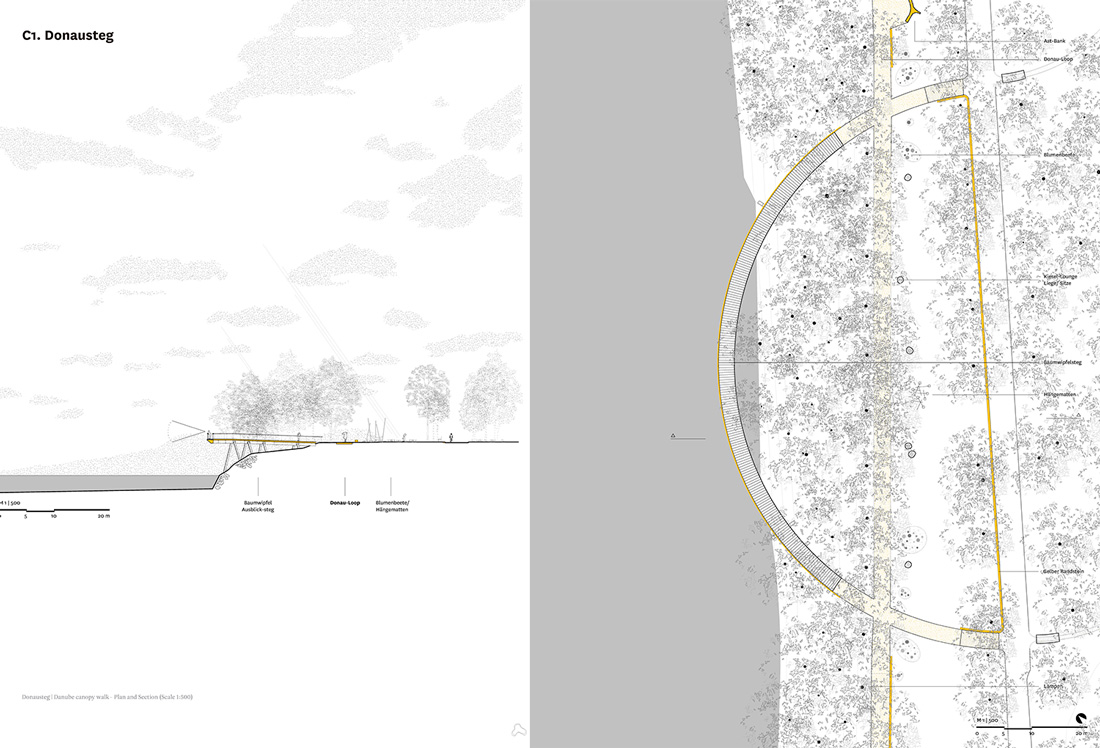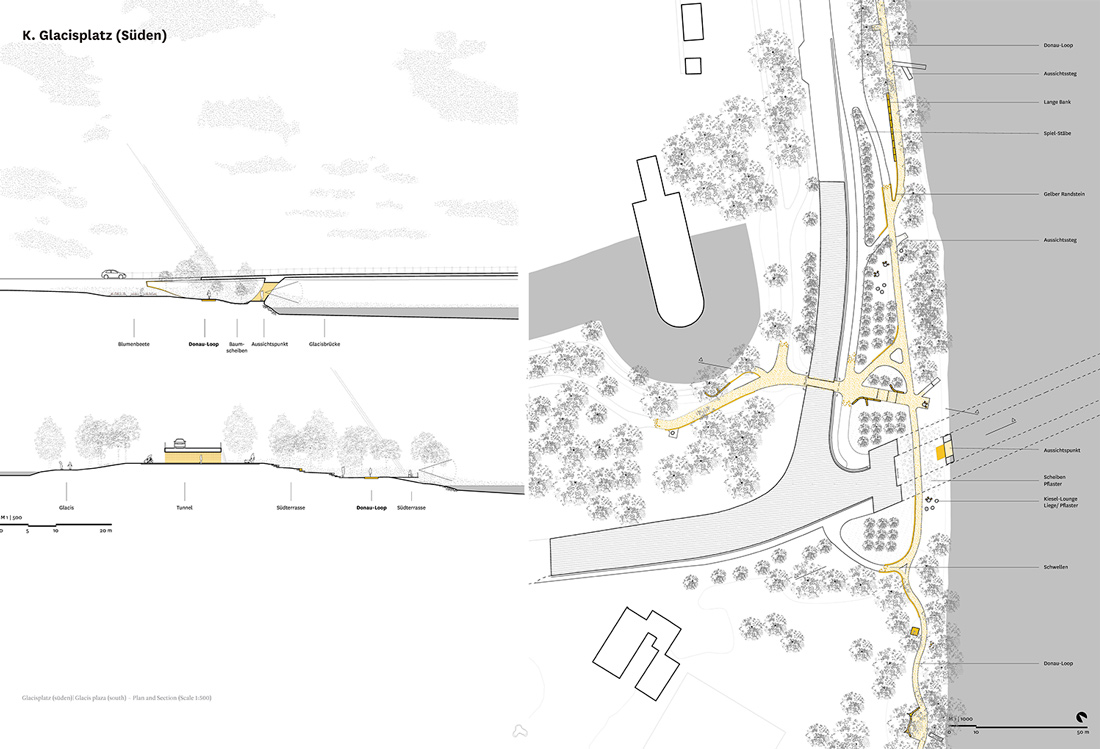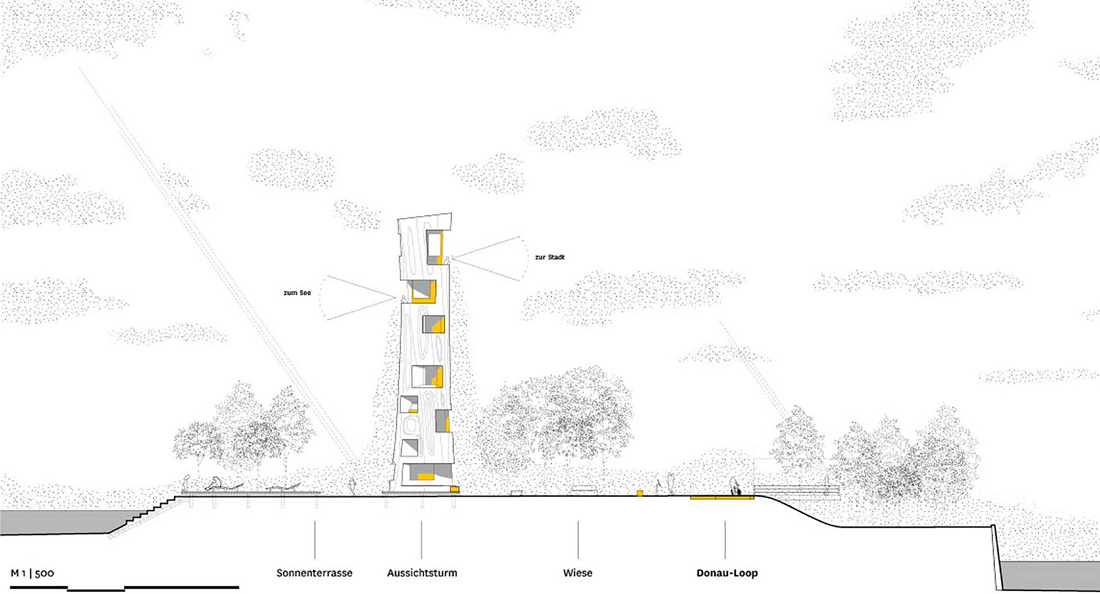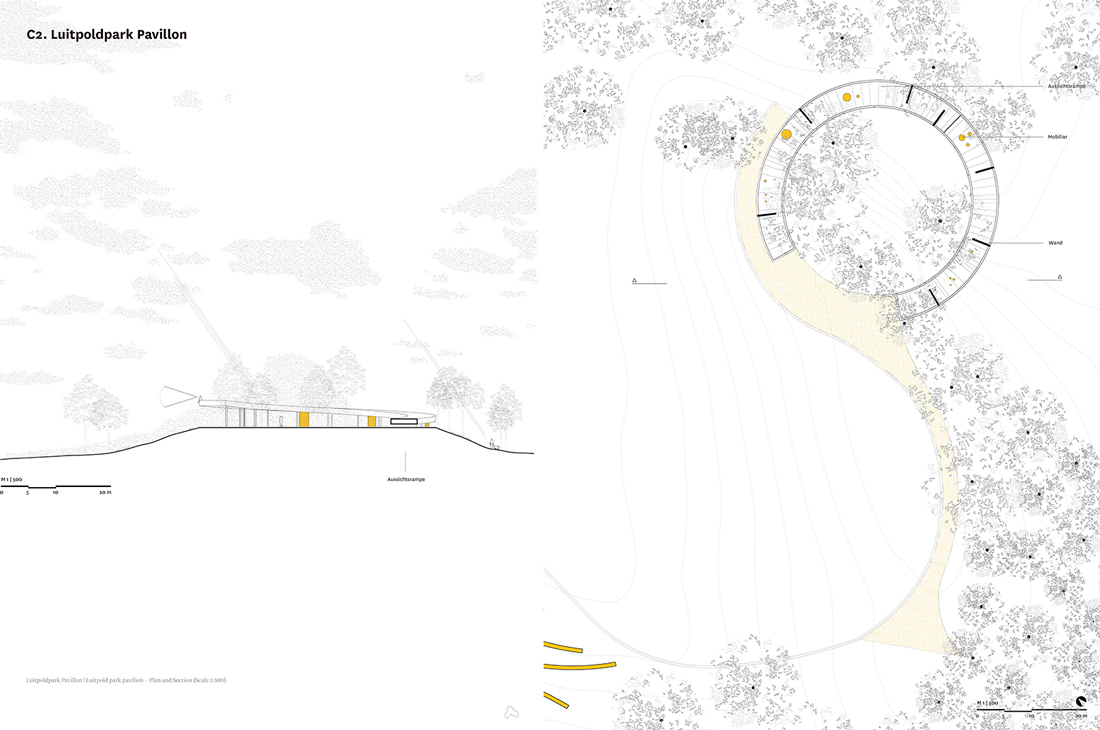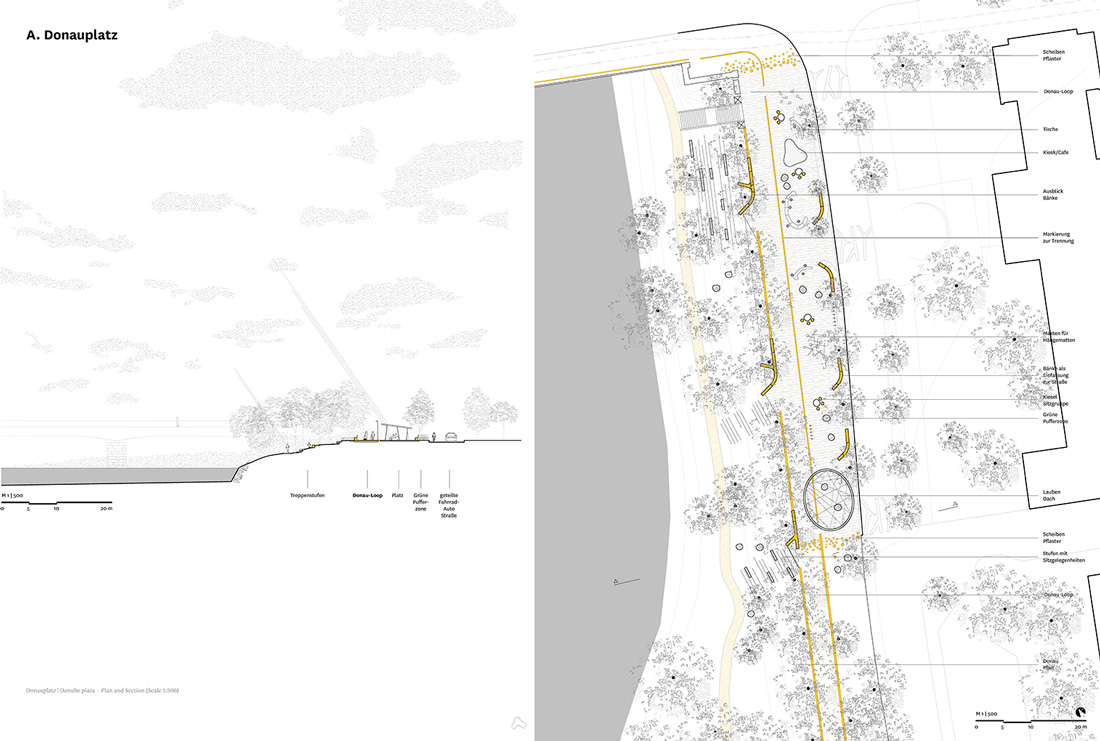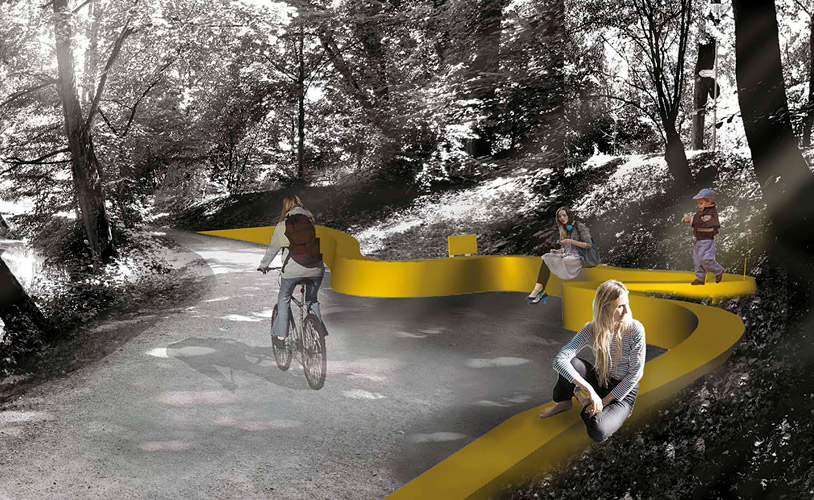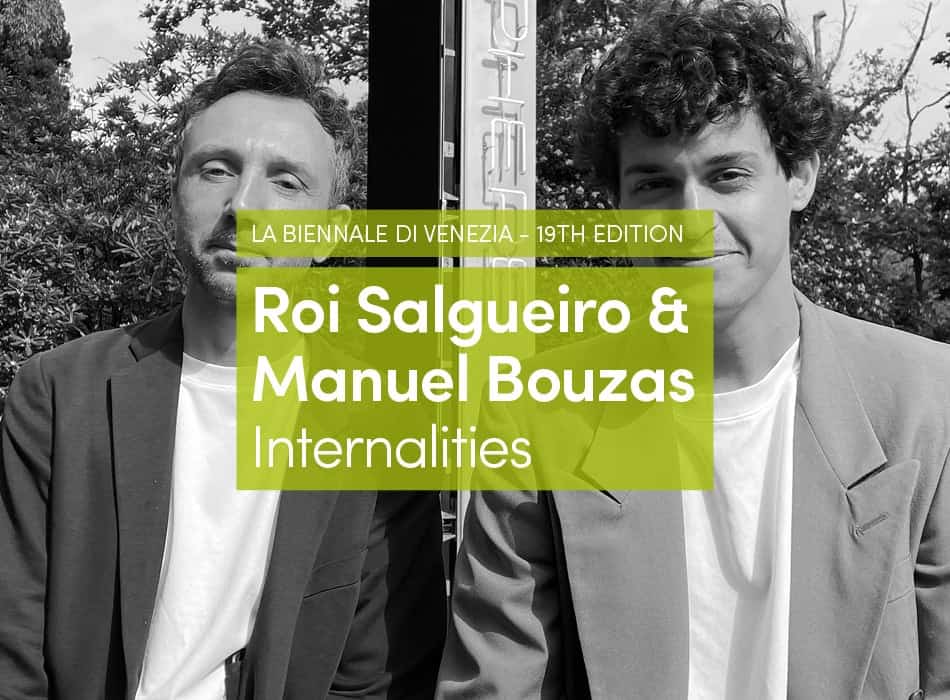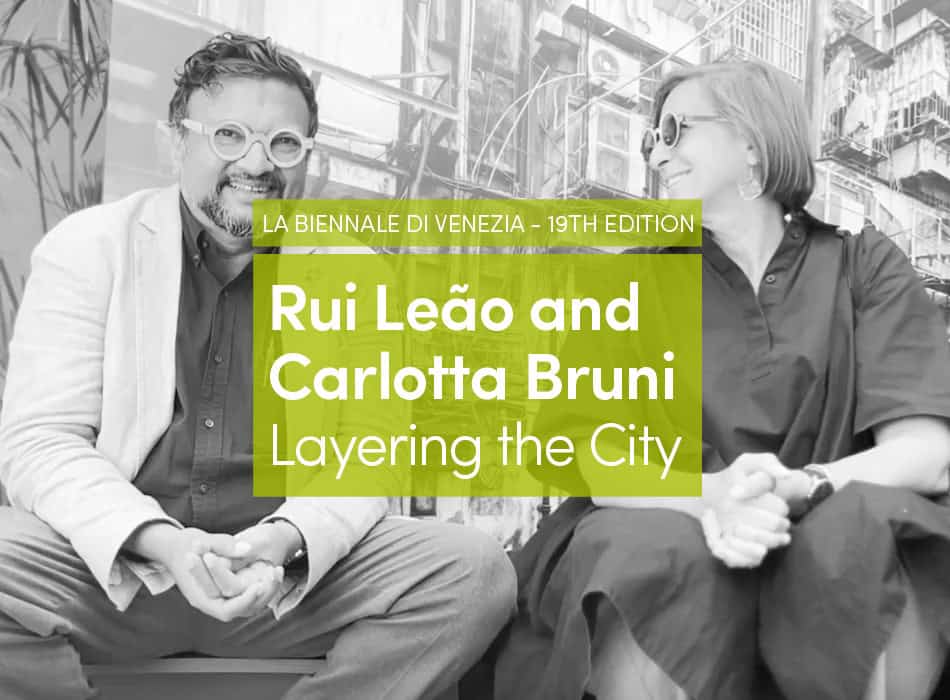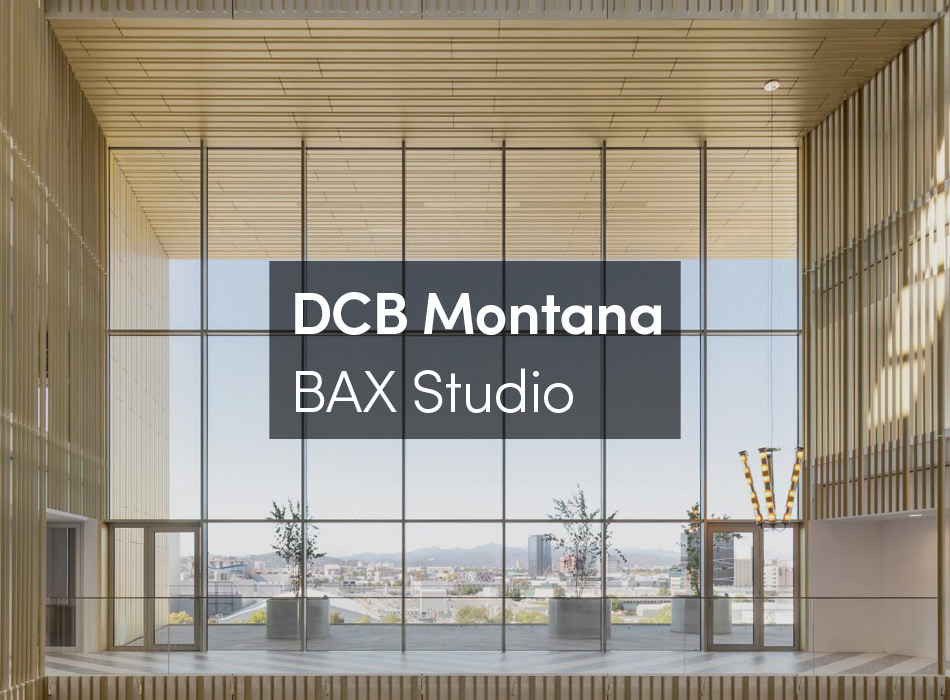The historical importance of the Danube River as a transportation route, military infrastructure, and ecological corridor makes the Stadt Park Donau | Donau-Loop project in Ingolstadt of primary relevance, given rising demands for sustainable growth and social well-being.
Emerging lifestyles connected to nature and an increased awareness of the benefits of sturdier ecologies require a new attitude towards the river’s environments. While its multilayered history uniquely positions the Danube in both local and international mindsets, the various pragmatic demands associated with defensive and military tactics, flood management and control, hydro-electrical power, fluvial transportation, and trade have resulted in an incremental build-up of physical barriers along its course. Sequential river channelization and infrastructural construction have resulted in habitat reduction and limited use and access from the adjacent urban fabric.
The Stadt Park Donau | Donau-Loop seeks to reclaim the river as a place for Ingolstadt’s residents through ecological, leisure, and aesthetic values. The project creates a new riverine district that encompasses the various landscapes along the river, reconnecting them with the medieval town and surrounding urban expansion through a series of clear entries and pathways. Social, cultural, and ecological in its aim, the project activates the forgotten riverine landscapes through the deployment of purposeful and flexible interventions. Telescopic in scale and tactical in design intentions, the project is inherently regional while simultaneously local and refined.
Large scale: The Stadt Park Donau is a new riverine district of approximately 210 Ha. The district sets the territorial outreach of the proposal within the city boundaries, moving from the riverbanks to the existing dikes and including the urban fabric and natural landscapes contained within. This new riverine district includes fourteen sub-districts, corresponding to the various landscape characteristics and microclimates.
Medium scale: The Donau-Loop is a continuous multi-modal circuit of 12 km along the riverbanks. Located on the dyke and existing desire-lines within the riverbanks, the Stadt Park Donau is a destination on its own as it weaves through the edges between city and river. Performing as a new place, the Donau-Loop is a circuit for delight, for physical and mental engagement with the river and its environments. It is tuned and designed according to the characteristics of the landscapes crossed throughout its journey. The various material characteristics of the paving, furnishings and signage support the recognition of the Donau-Loop as curated for a range of walking velocities and users. Tactical and precise design interventions move along its extent, enhancing and diversifying the programs along its edges while offering new ways of experiencing the atmospheric qualities often overlooked in everyday use. The pathway and its programs expand access and use throughout the year by offering comfortable zones to rest, exercise, and dwell along the river. While the project exposes visitors to the river’s microclimates during spring and summer, it shelters them during winter and fall through the use of a series of design techniques and elements, including a heated bench prototype, vertical windshields, humidifying canopies, reflecting walls, fire pits, fountains, and clearings in the forest.
Small scale: The stations are moments of programmatic concentration; “acupuncture-like” design interventions within the Donau-Loop. Fourteen in total, the stations are allocated accordingly to the potentials found in each of the landscape sub-districts. A consistent palette of furnishings and materials within the proposed stations creates a unified identity throughout the larger network. The stations are sited and designed in order to clarify connections between the river and the adjacent fabric, to offer moments of crossing, and to promote active and/or passive leisure, such as water sports, tree climbing, boating, biking, swimming, bird watching, scenic observation, sitting, and informal play. The stations are contemplative nodes and moments of climatic comfort in which one can dwell in the immersive qualities of the riverine environments—their diurnal and nocturnal cycles, sounds, temperature, light, scent, and shade. The project claims a series of objectives: innovation, ethical standards and social responsibility, environmental quality and resource efficiency, and economic performance.
Innovation
The restoration of fluvial landscapes is currently a substantial challenge for many European nations. While The Stadt Park Donau | Donau-Loop Project is a site-specific model, it also proposes an overall strategy of overlap between the natural environment and civil society, where the individual and the collective are at the center of the project, inviting ownership and inclusivity. The prototypical and sequential approach underlying this project is organized as a kit of parts, allowing for innumerable combinations of designs and incremental build-outs over time. In addition, The Stadt Park Donau | Donau-Loop Project proposes a multifaceted approach, one that focuses on the blending of ecological, social, and cultural capital. The project envisions the Danube as a rich and ever-changing resource for the urban residents of Ingolstadt. The river is an asset that should be experienced, lived, and remembered.
Ethical Standards and Social Responsibility
The needs and desires of Ingolstadt residents have been major driving forces in the development of the Stadt Park Donau/Donau-Loop. Over the course of two years, OFICINAA has worked extensively with local community groups to create a platform for exchange to strengthen the collective identity of the river. This initial participation is a crucial step in growing long-term community ownership of the project. Once catalyzed, the project seeks to relink the people of Ingolstadt with their river, creating a new urban spine for increased ecological performance, civic engagement, and social well-being. The river offers a microclimate that ameliorates the heat in summer and the extreme cold in winter, and the design capitalizes on this potential for climatic comfort. The stations, as programmatic nodes, offer moments of refuge and comfortable rest. Microclimatic tunings through the designed elements, such as heated benches, vertical windshields, humidifying canopies and fire pits, provide the opportunity to comfortably use the river as a public space throughout the seasons.
Environmental Quality and Resource Efficiency
The renaturalization of the Donau edge was a primary goal for the Stadt Park Donau | Donau-Loop. In softening the edges and thickening the riparian habitat of the river with gravel grounds, the project proposes to safely increase environmental productivity through such measures as an increase in fish habitat and the bolstering of plant communities. In the biotope areas, the Donau-Loop is minimal in presence and footprint. Elevated and off the ground, it allows a continuum in the ground cover and guides the visitor with restraint. The ecological aspect of the project also engages people through targeted education, integrating educational programming into the stations as a means to highlight the history and importance of the Donau. To this end, the project proposes an outdoor classroom in Luitpold Park, an elevated bridge through the forest canopy, ear trumpets to amplify the forest sounds, and flora and fauna identification signage.
Economic Performance
Due to the incremental nature of the proposal, the Stadt Park Donau | Donau-Loop Project can be built over time as funding sources become available. Once constructed, the project will create a new destination for Ingolstadt, catalyzing development in the historical center and along its edges. Furthermore, the various stations located throughout the 12 km loop will create new recreation-based micro economies for the city. A few potential economic opportunities related to the boating and recreational history of the Danube are considered, such as temporary lodging for the “Via Danubia” cyclists, overlook towers and platforms, resting stations, cafés, wayfinding, kayak courses, and boating docks. Furthermore, once the project is built, there is potential for the city of Ingolstadt to tap into existing Danube boat routes, which are major sources of revenue for the region.





